
This ’57 is the epitome of stance, and I don’t mean in a hellaflush or poked or whatever-other-name-someone’s-thought-of kinda way. Randy Winkle’s gasser has stance in such a way that it creates a presence. A presence strong enough that I made a beeline for it when I saw it at March Meet.
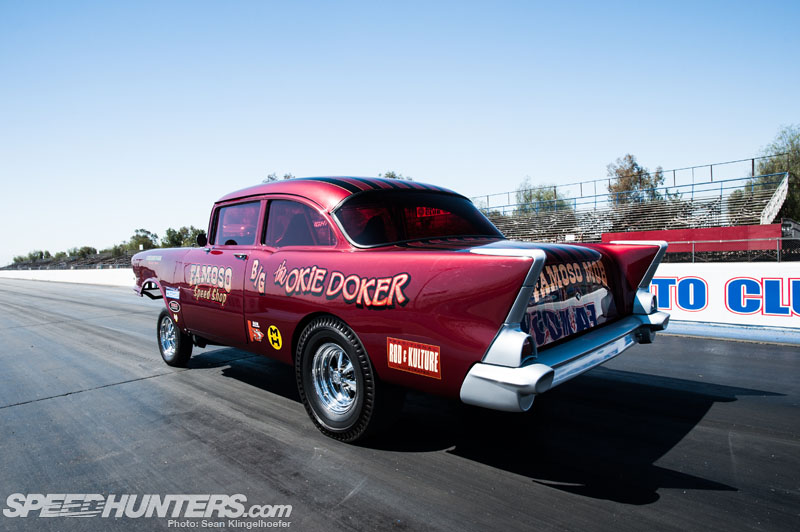
I didn’t realize what it was that made this car so intriguing at first. It’s the kind of car you can’t take your eyes off, but you don’t know why. That’s what a perfect stance will do; be it a nose-high gasser or a slammed kustom, body-dropped minitruck or hellaflush import. It infuses attitude into the build – and it’s a lot easier to get wrong than right.
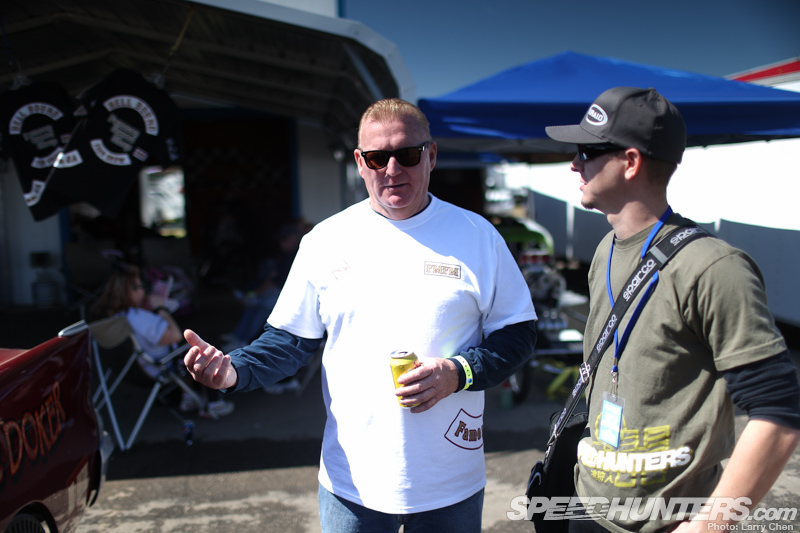
We just recently showed you Randy’s insane nostalgia FED, which he claims this car was built to tow. As he described his Chevy in the humble way that most accomplished builders will, he quickly skimmed past the suspension set-up. The front frame section was cut out and replaced with box tube to mount Speedway leaf springs and a solid axle. Simple enough, right? Focused on tech specs, he brushed over the fact that the Chevy’s stance is actually the crux of the whole build.
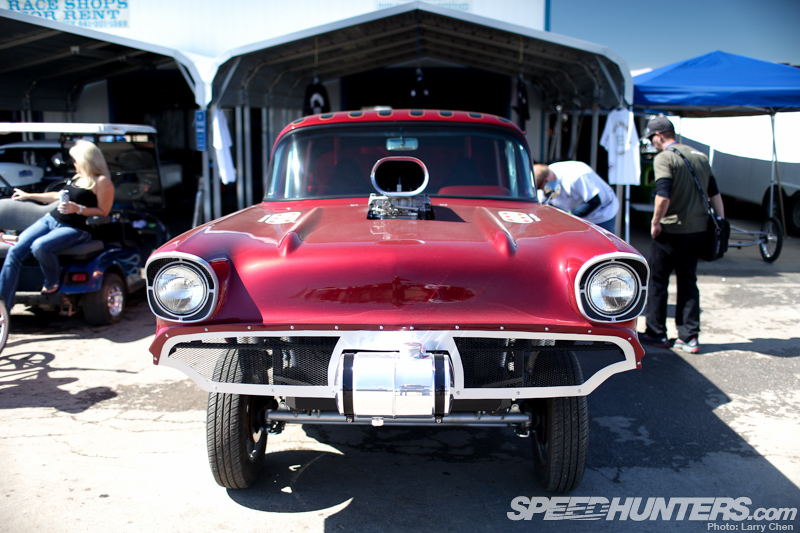
The theory behind the gasser format is to get the weight over the back wheels to make the car launch as quickly as possible – a very functional task. With function comes form of course, yet 99 out of 100 gassers don’t look this good. It’s not just following a formula, it’s knowing how to make it look right.
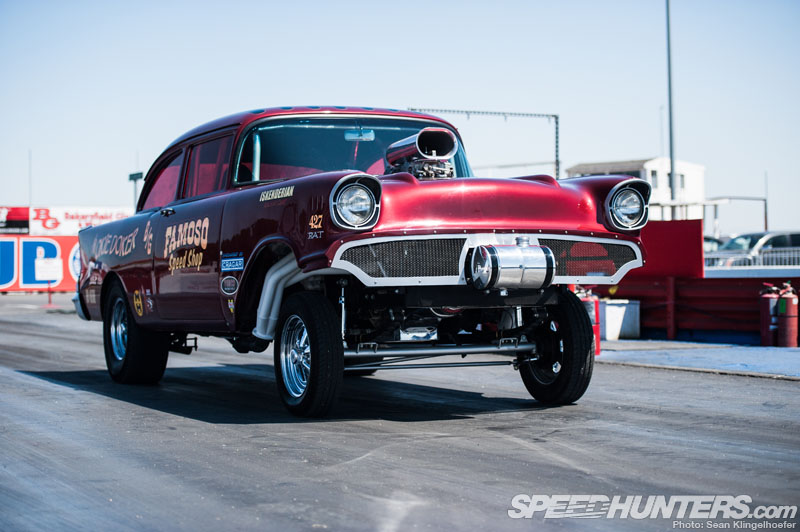
Stance. It starts with the reverse rake. Extreme? Yes, but not over the top. Couple that with the narrow track width that makes the front wheels look like they’re hanging in the air and it all starts to come together.
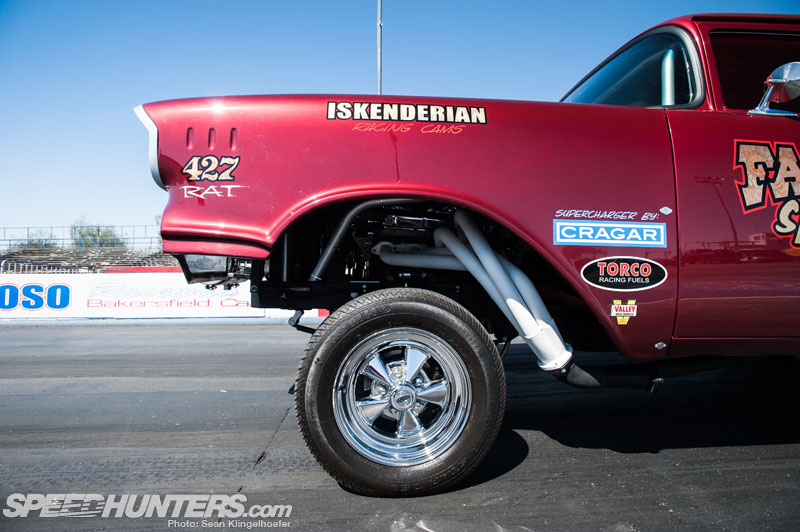
It’s not just the height that makes the stance though; it’s what’s done with the negative space left behind once the front is jacked up. White fenderwell headers fill the void with contrast and the lack of front bumper visually lifts the front even further, never mind the obvious weight shedding.
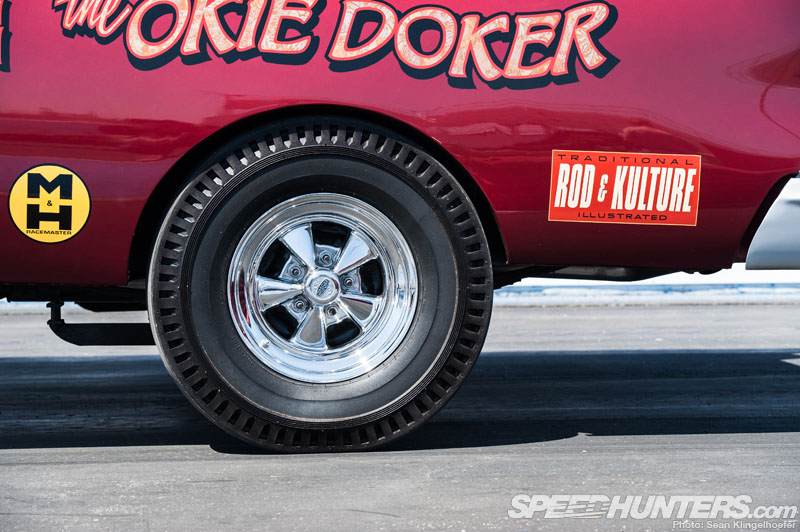
The rear fender opening on a ’57 Chevy is actually a very pretty design, but to hell with all that. A perfect radius was torched out to fit the pie-crust slicks, with the tire’s square profile now mated to the simplified fender. Nice execution, but more important is the attention to proportion in each dimension.
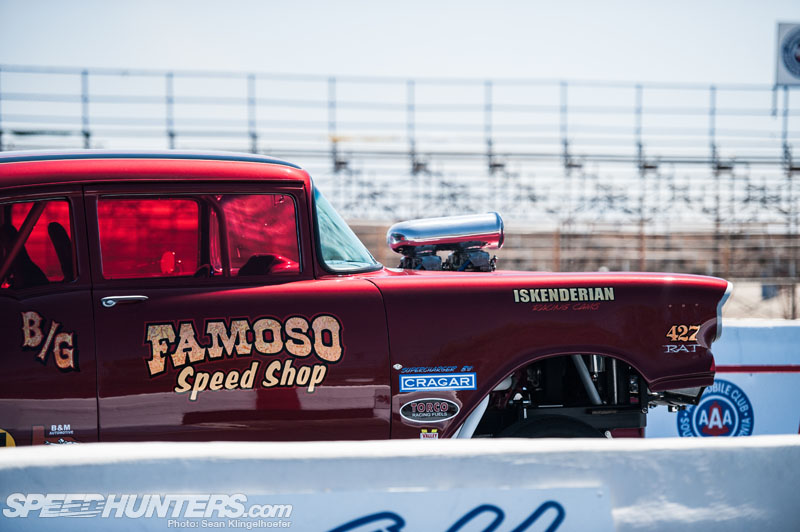
Obviously Randy and his crew at Famoso Speed Shop know how to make a dragster and a gasser look right. When you’ve been around this stuff long enough and have become so well versed in a specific genre, it just becomes second nature to build a car that nails a look so well.
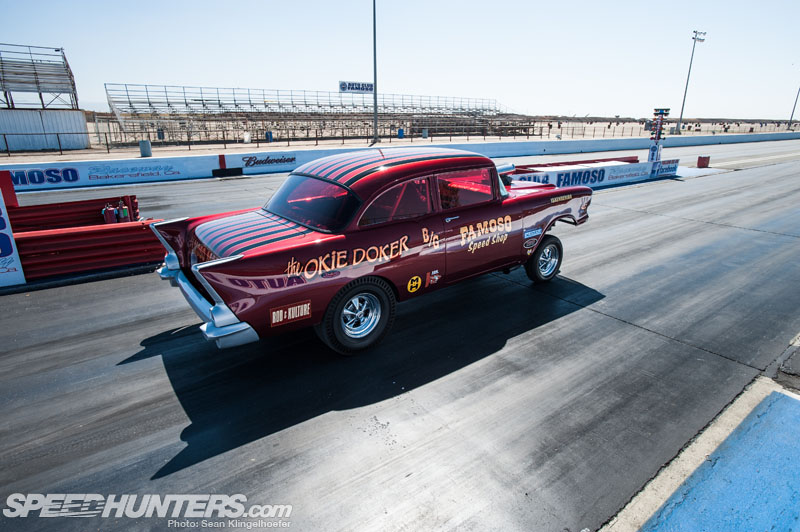
Moving on to the style portion of our lesson, take a look at the incredibly executed body and paint. The reflection of the track barrier is a good indication of how straight the Chevy’s sheetmetal is.
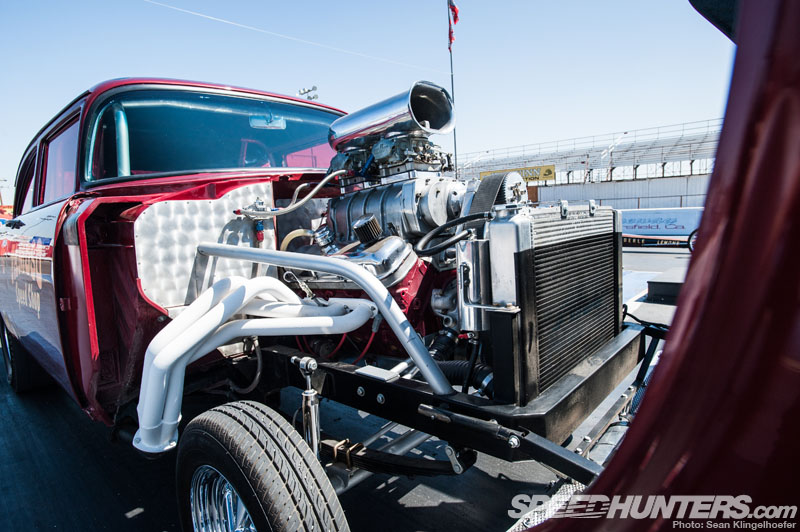
The front fenders aren’t sheetmetal at all though. Usually composite panels can be spotted from a distance, but not in this case. With the one-piece fiberglass front flipped open you can get a better look at the suspension and start to take in the blown Big Block.
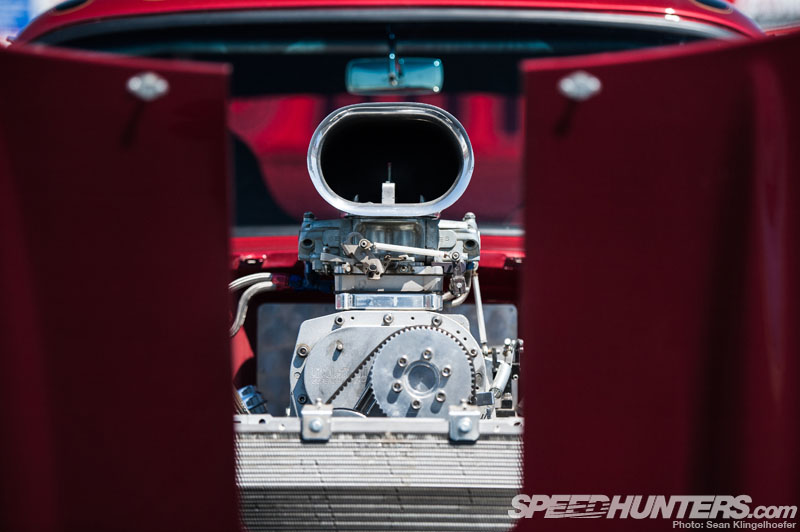
The 496ci BBC is stuffed with race parts just like the dragster, only this time with a Littlefield supercharger, two Demon carbs and a Hilborn scoop. The mill has a utilitarian look, an interesting contrast to all the shine on the exterior.
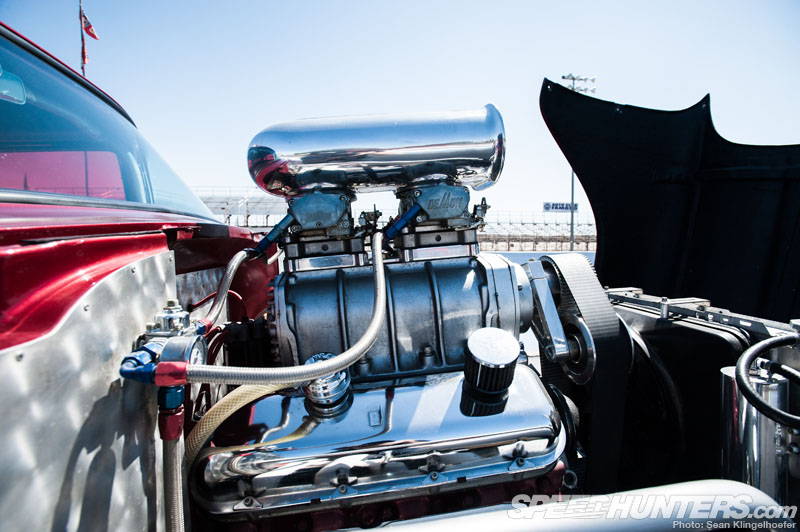
See what I mean? The raw aluminum casting on the supercharger looks industrial-tough, a blend of badass race car with show-worthy street car.
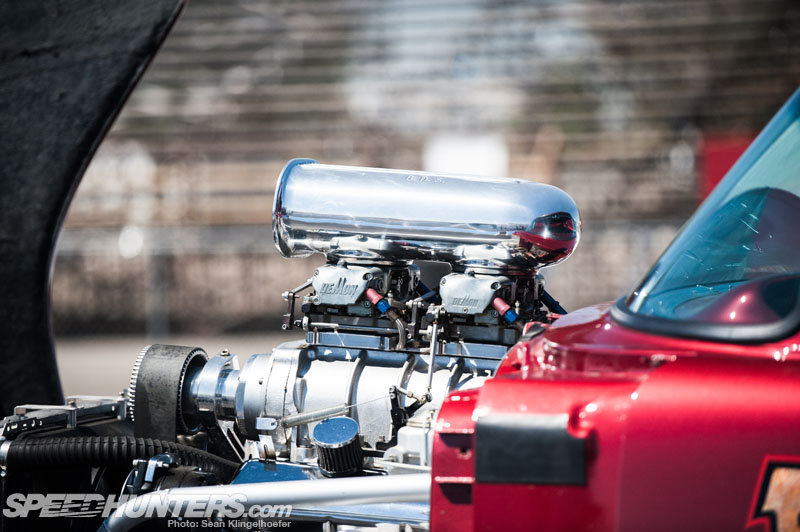
The mismatched Demon carbs are another hint at the racer that Randy Winkle truly is.
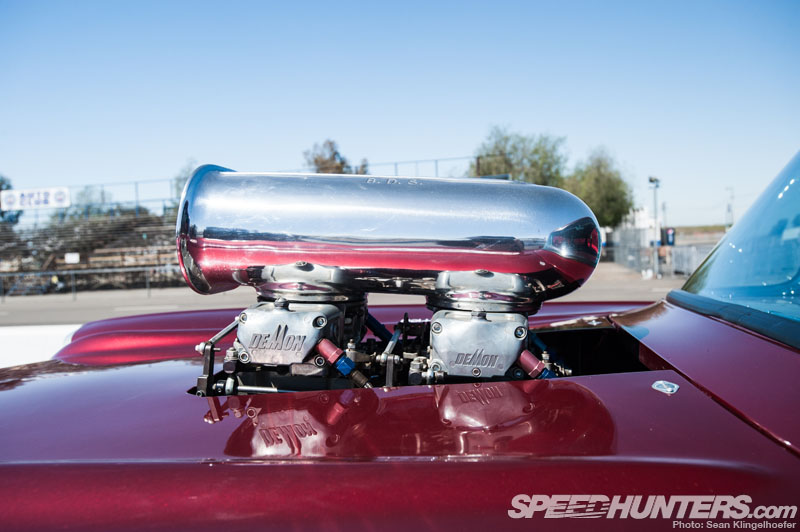
Much like the stance of the car itself, the scoop sticks its nose in the air a little too.
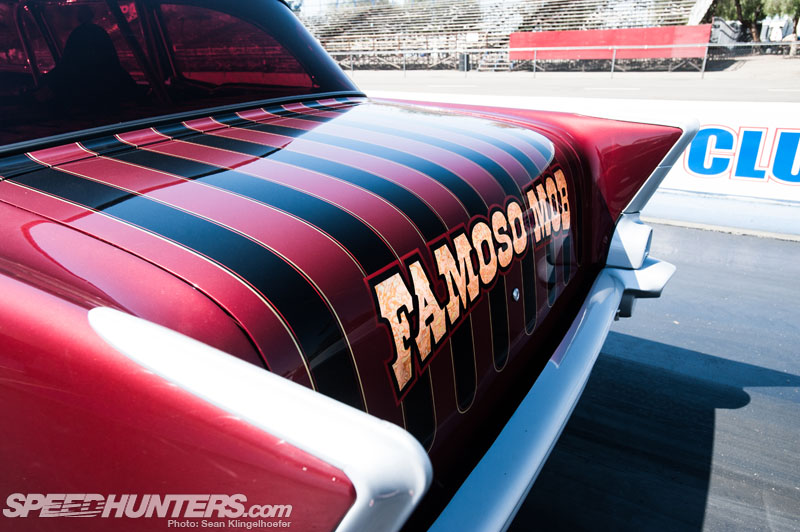
Just like the O’ Black Betty dragster, there’s real gold leaf and hand-laid pinstriping beneath a deep clear coat – again on par with show cars. See how straight the fiberglass trunk lid is? The weight savings weren’t critical for what this car is used for, but Famoso Speed Shop had to take a race part and elevate it to show status. This has to be the most bodyworked ‘glass trunk in existence.
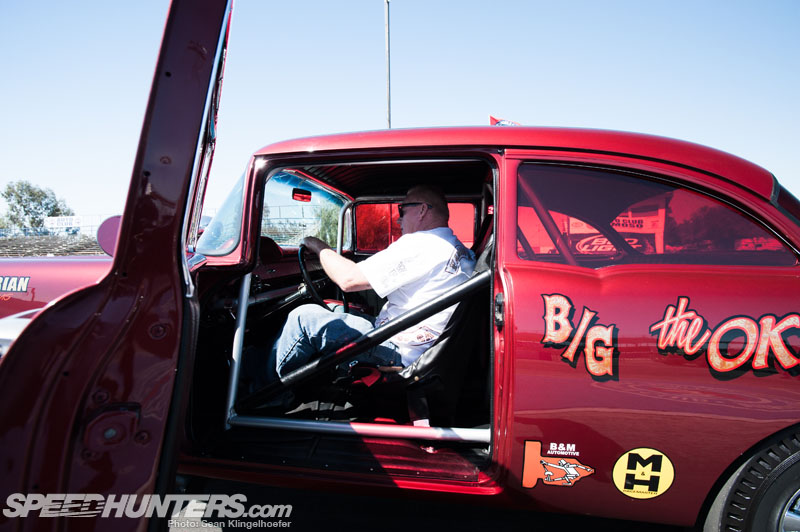
Notice the hand painted sponsor logos under the clear. Would you put a decal over that paint? Yeah, me neither.
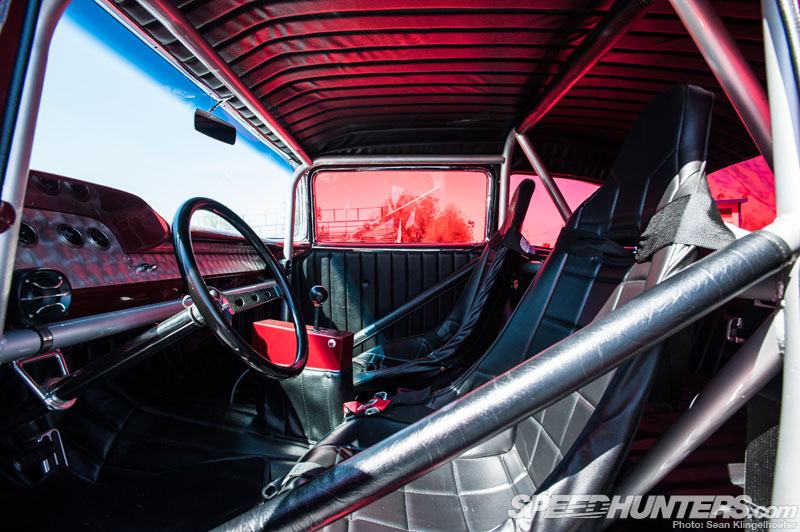
The interior is mostly strip, with a bit of street thrown in. You have to climb over the monkey bar roll cage to wedge your ass into the fiberglass bucket seat, but once you’re in there you can listen to the speaker that’s hose clamped onto the spreader bar below the dash. Sean reported that it actually sounds pretty good.
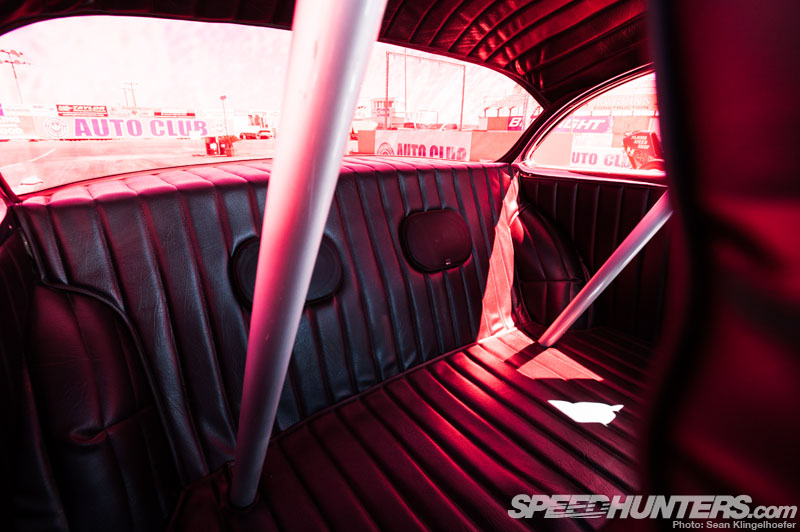
Famoso Speed Shop added speakers in the back too, then made black tuck ‘n’ roll panels to finish off every surface. I wouldn’t dream of a black vinyl interior living here in the hot Arizona desert, but you can get away with it in California.
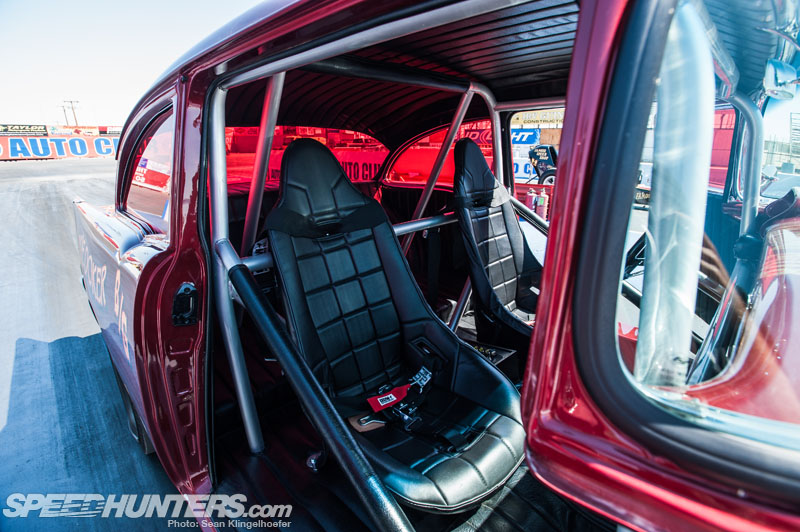
The red tinted glass is clearly a nod to the ’60s. Randy asked us if we knew anyone who wanted to tint their windows red because he had to buy a giant roll of the stuff to do this car!
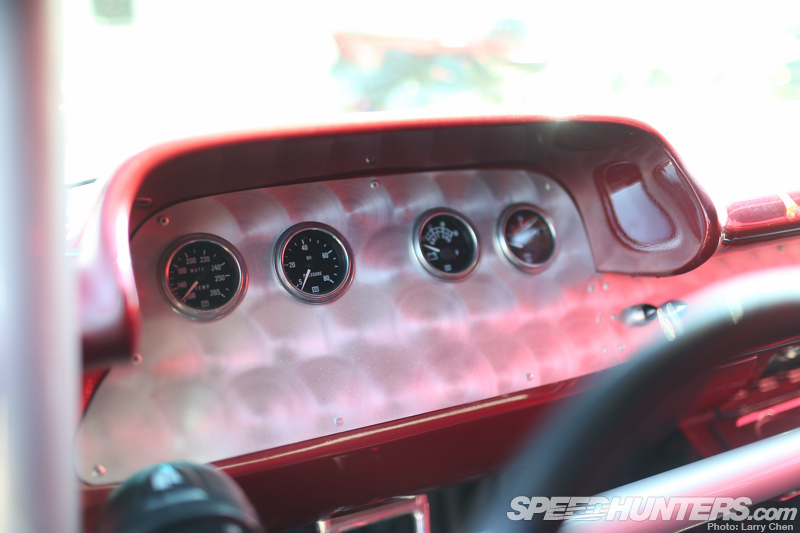
The stock cluster is long gone with an engine-turned aluminum panel taking its place. Only the necessary gauges were re-installed, and a speedometer didn’t make the cut.
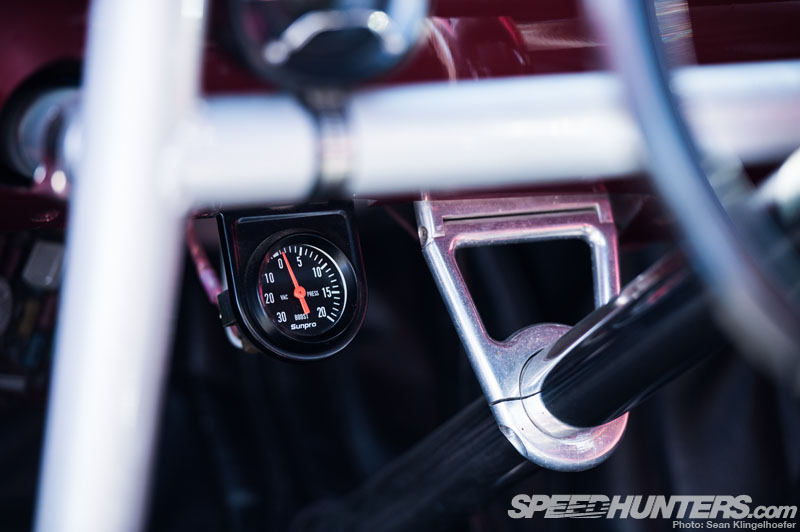
An old-style Sunpro boost gauge hangs out below – an add-on meter for an add-on blower.
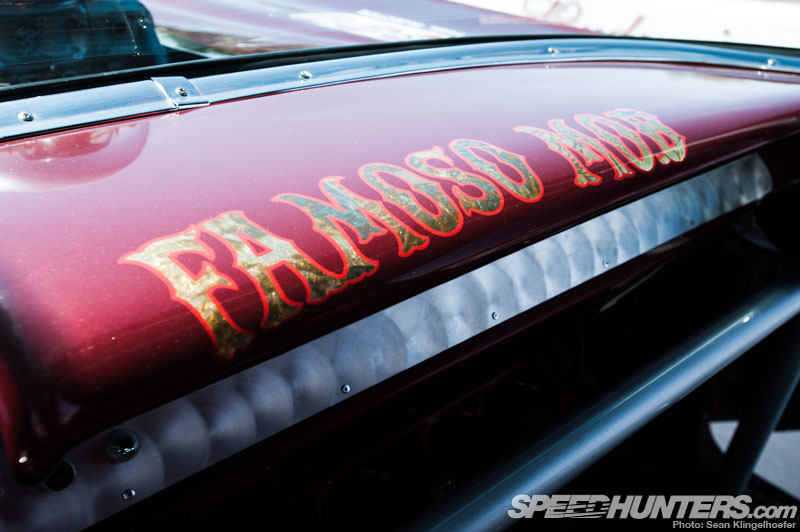
This is what I mean when I talk about the show-type quality in this build. Most race builds would not have continued the engine-turned panel all the way across, and they certainly would not have painted and gold-leafed the dash to match.
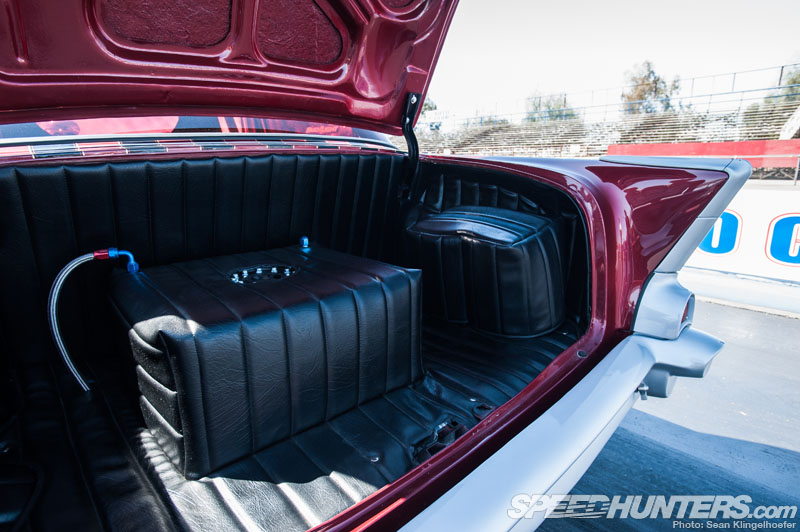
More street and strip blending in the trunk. Everything is covered in black pleats to continue the theme that started inside. Also notice the silver painted bumper and fins – they’re fiberglass too. Seriously though, when’s the last time someone upholstered their fuel cell?
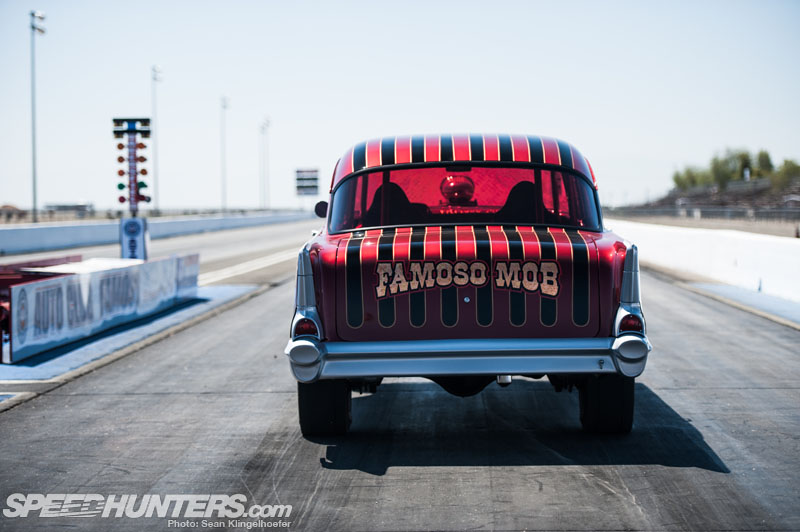
We’ll end our lesson in stance and style with an emphasis on pure style. This is where the paintwork takes over and has the most impact; beautifully tying in with O’ Black Betty, the front engine dragster that this car was built to haul around.
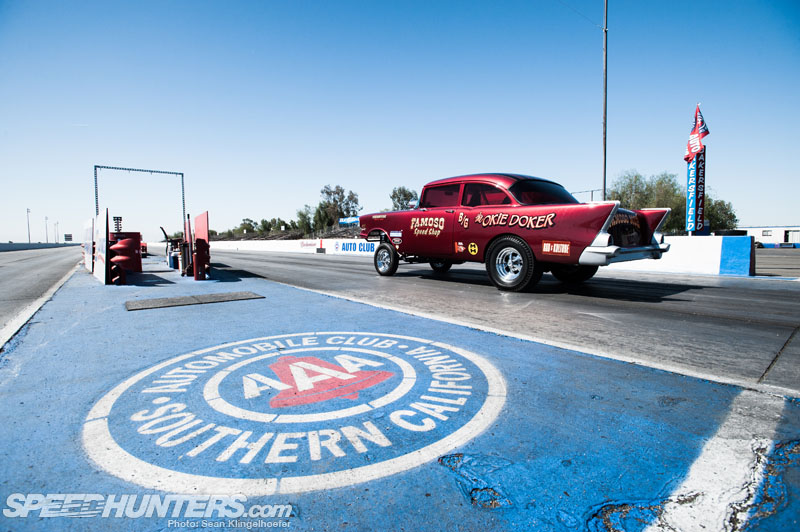
Randy’s ’57 Chevy is more than the sum of its parts thanks to his innate sense of style and stance. But what do you think? Is it possible for a car manufactured in 1957 and built in the spirit of ’60s drag racing to teach us what stance really means?
Words by Keith Charvonia
Instagram: SpeedhuntersKeith
Email: keith@dev.speedhunters.com
Photos by Sean Klingelhoefer
Instagram: seanklingelhoefer
Email: sean@dev.speedhunters.com
Additional photos by Larry Chen
Instagram: larry_chen_foto
Email: larry@dev.speedhunters.com
Randy Winkle’s 1957 Chevy Gasser
Numbers
Max power: 600hp, max torque: 650lb/ft, weight: 2600 lbs, best ET: 10.5 seconds
Engine
496 ci Chevy Big Block, 10:1 compression, Isky cam, valve springs, retainers, push rods and lifters, Peter Jackson cam gears and timing chain, Crower H-beam rods, ARP head bolts, ARP conrod bolts, Scat crankshaft, Clevite bearings, Famoso Speed Shop engine mounts, Hilborn intake scoop, twin Demon carbs, Strip Dominator intake manifold, Holley fuel pump, regulator and filter, Speedway headers, 12-gallon fuel cell, MSD coil, Littlefield supercharger, BeCool radiator, wiring by Famoso Speed Shop
Driveline
Turbo 400, trans brake, Olds/Pontiac rear differential, PTO Sales driveshaft, Currie axles, SFI flex plate, Famoso Speed Shop shifter
Suspension/Brakes
Front – Speedway straight axle and leaf springs, Rear – leaf springs, air shocks, slapper bars, GM disc and drum brakes
Wheels/Tires
E/T 15×4″ wheels with 165×15 tires (front), E/T 15×12″ wheels with Hurst cheater slicks (rear)
Exterior
Steel 1957 Chevrolet Two Door Sedan body, fiberglass one-piece front end, trunk and rear bumper, red tinted glass. graphics by Jamie at Famoso Speed Shop, paint by Mikey Alspough
Interior
10-point roll cage, Jaz bucket seats, Crow harnesses, unknown vintage steering wheel, Stewart Warner gauges, matching paint and graphics
O’ Black Betty FED dragster by Famoso Speed Shop
Famoso Speed Shop’s Opel Kadett
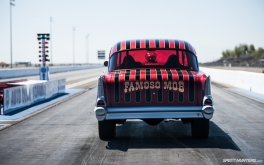
Photo by Sean Klingelhoefer
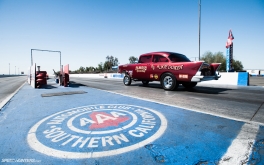
Photo by Sean Klingelhoefer

Photo by Sean Klingelhoefer
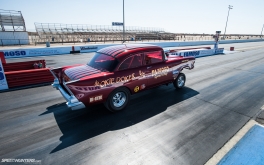
Photo by Sean Klingelhoefer
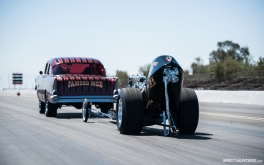
Photo by Sean Klingelhoefer
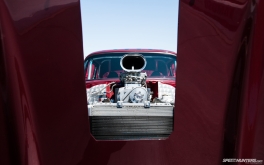
Photo by Sean Klingelhoefer







